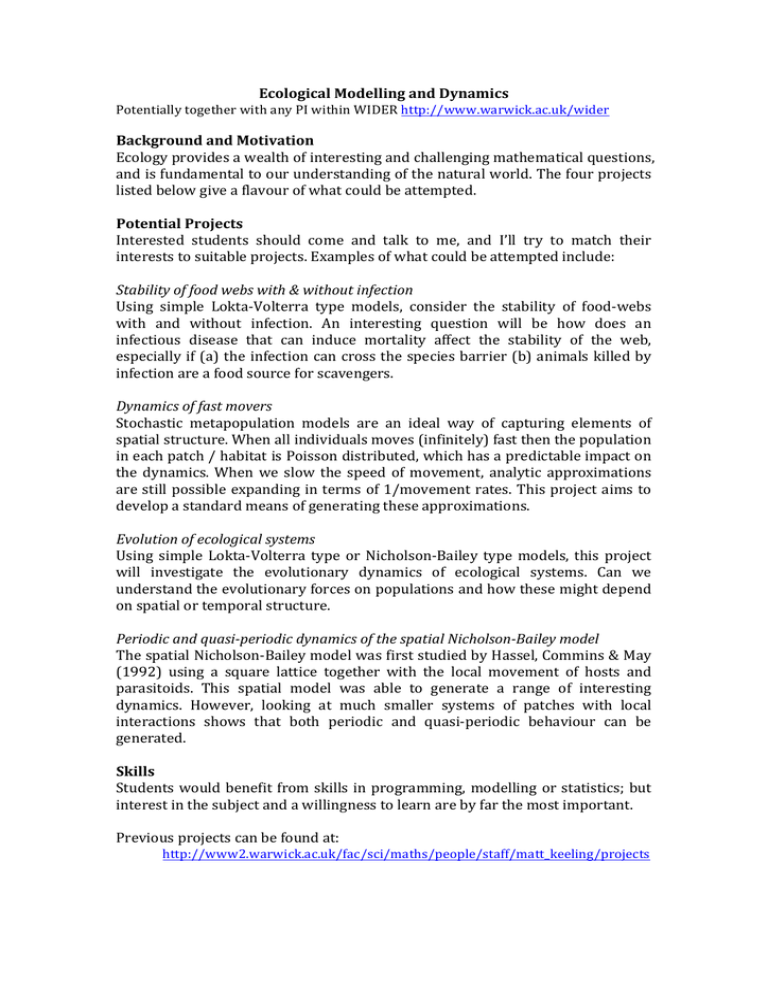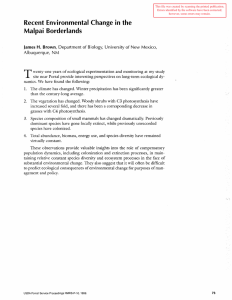Document 13294350
advertisement

Ecological Modelling and Dynamics Potentially together with any PI within WIDER http://www.warwick.ac.uk/wider Background and Motivation Ecology provides a wealth of interesting and challenging mathematical questions, and is fundamental to our understanding of the natural world. The four projects listed below give a flavour of what could be attempted. Potential Projects Interested students should come and talk to me, and I’ll try to match their interests to suitable projects. Examples of what could be attempted include: Stability of food webs with & without infection Using simple Lokta-­‐Volterra type models, consider the stability of food-­‐webs with and without infection. An interesting question will be how does an infectious disease that can induce mortality affect the stability of the web, especially if (a) the infection can cross the species barrier (b) animals killed by infection are a food source for scavengers. Dynamics of fast movers Stochastic metapopulation models are an ideal way of capturing elements of spatial structure. When all individuals moves (infinitely) fast then the population in each patch / habitat is Poisson distributed, which has a predictable impact on the dynamics. When we slow the speed of movement, analytic approximations are still possible expanding in terms of 1/movement rates. This project aims to develop a standard means of generating these approximations. Evolution of ecological systems Using simple Lokta-­‐Volterra type or Nicholson-­‐Bailey type models, this project will investigate the evolutionary dynamics of ecological systems. Can we understand the evolutionary forces on populations and how these might depend on spatial or temporal structure. Periodic and quasi-­‐periodic dynamics of the spatial Nicholson-­‐Bailey model The spatial Nicholson-­‐Bailey model was first studied by Hassel, Commins & May (1992) using a square lattice together with the local movement of hosts and parasitoids. This spatial model was able to generate a range of interesting dynamics. However, looking at much smaller systems of patches with local interactions shows that both periodic and quasi-­‐periodic behaviour can be generated. Skills Students would benefit from skills in programming, modelling or statistics; but interest in the subject and a willingness to learn are by far the most important. Previous projects can be found at: http://www2.warwick.ac.uk/fac/sci/maths/people/staff/matt_keeling/projects


